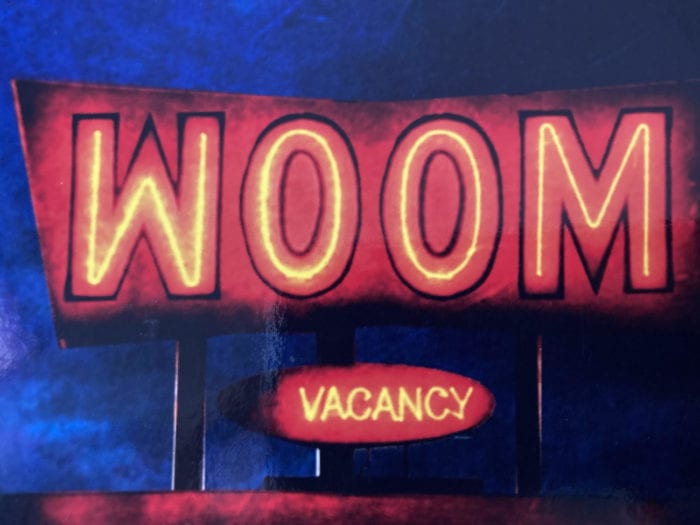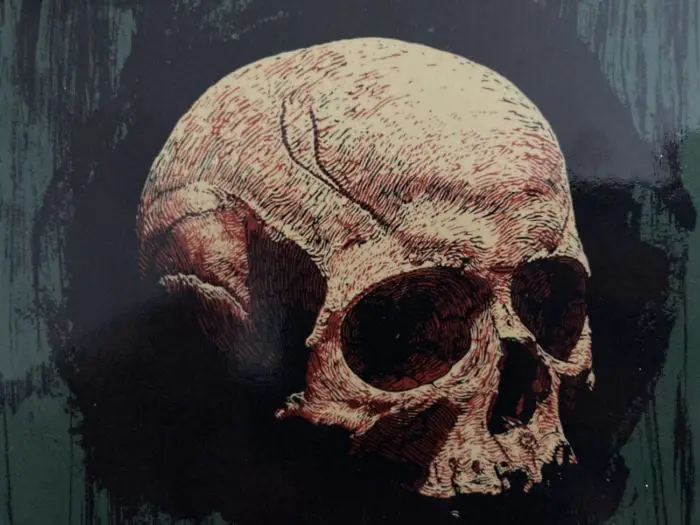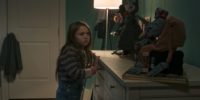I’ve written before about how extreme horror novels can get away with so much more than films can due to the fact that they’re just words on a page. Sure, they may be repulsive, but at the end of the day the reader is filling in the blanks on their own rather than being shown the nastiness by someone else. Today, I’m exploring a unique angle on extreme horror by examining two books that each adopt a distinct style within the splatter genre. Duncan Ralston’s “Woom” is a profoundly unsettling psycho-sexual thriller, delving into the profound impact trauma can have on an individual. On the other hand, Wrath James White’s Succulent Prey takes the theme of cannibalism to such extreme lengths that it borders on comedic. Both books achieve their intended effects remarkably well, yet despite belonging to the same sub-genre, they are strikingly different from each other.
Suffice it to say that I’m going to be discussing some pretty repulsive subject matter here, as well as full spoilers for both books. If you’re sensitive to topics like psychological trauma, mutilation, abortion, cannibalism, and sexual trauma, I’d recommend not reading this article.
Anyway, let’s take a deep, deep breath, and dive in to the splatter.
Woom by Duncan Ralston

The plot description for Woom is rather vague, with it simply stating that Room 6 of a place called the Lonely Motel has experienced seriously dark things, and that the two characters who occupy it both have their own troubled pasts. Angel hires a sex worker named Shyla, and tells her stories of bad things that supposedly happened in room 6 while masturbating her with sex toys. Each chapter is a conversation between the two, and Shyla has a couple of stories of her own to share. But as the night goes on, it becomes clear that something isn’t right with Angel, who seems less interested in Shyla as a means of sexual gratification.
I say without hyperbole that some of the stories in Woom hit me like a freight train, and more than a few actually made me feel ill to the point that I had to stop eating during a couple of them. I can’t recall the last time a piece of media did that to me, and instead of going for over the top theatrics and buckets of blood, the stories revolve around people doing terrible things to their own bodies. Yes, the extreme body horror of Woom is firmly planted in reality, save maybe one chapter that is more darkly humorous than it is disturbing.
In the first major chapter, named “Cram(ps),” Angel narrates to Shyla a story about a couple, Johnny and Jenny, who become involved in drug smuggling. They use Room 6 as a rendezvous point with their drug dealer. Johnny is portrayed as the less dominant partner, with Jenny being unfaithful and showing little respect for him. One night, Jenny attempts to smuggle small packets of heroin internally after her first attempt to carry them in her stomach fails. The book describes in detail her struggle to swallow the packets and her subsequent decision to hide them in her private parts. The situation escalates when one of the packets bursts.
Rather than feeling exploitative, though, this kind of unflinching eye that Duncan Ralston uses feels like it only serves to make the reader feel the full impact of what these characters do to themselves. And unlike other stories in the extreme horror genre, the characters feel like real, regular people that have fallen on very bad times. It’s clear that Ralston has sympathy and respect for them as individuals even though they themselves don’t have any self-respect. And as more and more chapters go by and we learn about different instances of self-inflicted trauma, it becomes clear that the recurring character in Angel’s story is him. He is Johnny, and he has been through some stuff. There’s one chapter in particular that goes into a coat hanger abortion where the mother slips and falls in the tub and accidentally kills herself. Her baby is saved, though, and that baby is Angel. This scene, in particular, is one of the most upsetting things I’ve ever read due to how far it goes in the description of the attempted abortion.
In the story, Shyla notices something worrying: the character begins using increasingly larger intimate toys on her, not out of affection but seemingly to test her physical limits. He dismisses her romantic advances, even ignoring her direct physical gestures. In a chapter titled “Man(nequin),” a flashback to Johnny’s prom night reveals a disturbing scene. He returns to Room 6 with his date, who has an unusual obsession with a mannequin once owned by her mother. During their close encounter, Johnny loses consciousness due to a substance on his date’s lips. When he wakes up, he finds her trying to alter his body with a belt sander, aiming to make him resemble the mannequin she is obsessed with.
While this is supremely messed up, it also goes a long way toward characterizing Angel and what he’s all about. It also plants a seed in the reader’s mind about what he wants from Shyla, and the reality is much worse than what they might expect. Angel is a deeply traumatized individual, from finding out that his mother didn’t want him due to social pressures, to seeing his girlfriend die from a self-inflicted overdose, to being made into what he perceives as something less than a man during his first attempt at intercourse. The title Woom comes from the fact that he has a speech impediment that makes it difficult for him to pronounce Rs, but it also recontextualizes just what Room 6 is. It has informed every aspect of his life, and he wants to be reborn as something or someone else.
The final chapter is particularly disturbing. The scene describes a character knocking Shyla unconscious and inserting his head into her private area, with every detail narrated in a blunt manner. This action causes physical harm to Shyla, and the character himself begins to suffocate. In response, Shyla regains consciousness and has to exert her muscles forcefully, similar to the act of childbirth. The extremity of this scene could have lent it a darkly comedic tone, but given what we know about the characters, it instead comes across as more tragic and twisted. While neither character loses their life within the narrative, they are both profoundly and permanently altered by the experience. Whether this change is for better or worse is left ambiguous.
Woom is an extremely repulsive piece of work, but the sympathy for its traumatized characters makes everything feel earned. Rather than coming across as exploitative, it instead feels like a pitch black character study about how places and the past can catch up to the present and cause terrible things to continue happening. It’s definitely not for everyone, and the body horror is so detailed as to make almost anyone’s stomach churn, but it is a highlight of just what the extreme horror novel can be when executed in a particular way. I’ve never read anything else quite like it, and beneath its nasty exterior is a painfully human story about the terrible things people do to themselves. It’s stuck with me ever since I read it more than a year ago during the height of the pandemic, and it’s likely to stick with me longer than that. Part of that is, of course, the horrific violence, but the other part is the well-written drama and psychology of the book’s cast.
In other words, it’s a genuinely good novel. Dark, repulsive, disgusting, and depressing, but good. Whether the same can be said for the next novel I’m here to discuss is something I’m still trying to figure out.
Succulent Prey by Wrath James White

This book is about Joseph Miles, an exceptionally troubled young man who is struggling with the fact that he thinks he was given a serial killer virus by the murderer who tortured him as a teenager. The book’s opening pretty much sets out the mission statement for Succulent Prey, with some graphic and upsetting details of the torture Joseph Miles went through at the hands of his tormentor. It cuts away before it goes further than good taste would dictate, but that’s okay because the rest of the book makes up for it.
Joseph Miles is described like something out of a comic book. He’s extremely tall, supremely muscular, and sports a gigantic member that women just can’t seem to get enough of. He also harbors a terrible craving for human flesh. He indulges his desires by attending a sexual addiction support group and reading online forum posts about people being consumed alive. In almost every scene that involves this, he experiences intense physical pleasure multiple times, occasionally in his clothes, sometimes outside of them. Additionally, the narrative frequently highlights his considerable physical endowment whenever he reaches a peak of excitement.
Yes, in case it isn’t clear, Succulent Prey isn’t exactly a highbrow thriller about where serial killers come from. Sure, the overarching plot involves him digging into werewolf lore to try and find some scientific connection between his urges and his past trauma, but the actual meat (pardon the pun) of the story is page after page of some of the most vicious and tasteless gore I’ve ever read about. He is constantly observing the people around him, and we’re treated to detailed descriptions of their bodies, and it’s never long before he starts wondering what they would taste like. When he meets a curvy woman named Alicia, he is torn because he, like, really really wants to eat her but he also likes her.
Less than a third into the book, the character consumes his first victim, and the intensity of the events escalates from there. He lures people in with his attractive appearance and large physical attributes before devouring them. These scenes are replete with explicit bodily fluids. The narrative can be described, quite literally, as a portrayal of a cannibalistic serial killer, with descriptions that seem intended to excite or provoke. It appears to cater to those with a taste for extreme violence combined with unusual and intense sexual elements.
In other words, it’s basically shlock, and only gets more absurd as it goes on. It isn’t until the book’s back half that Joseph decides to go after the killer that tortured him when he was a teenager, which is where the bulk of the actual plot happens. The logic is that there are versions of werewolf lore that if someone kills the werewolf that bit them, the curse will be lifted from them. Of course, along the way Joseph kidnaps a man that he met on the cannibal forums he frequents and he’s been slowly eating him. This man really wants Joseph to eat him, so Joseph eventually obliges by spit roasting him in the middle of a public park in broad daylight. This scene extends over several pages, featuring elaborate descriptions of a spike being inserted through a man’s anus. During this, both Joseph and the man experience intense physical pleasure multiple times.
The blend of sensuality and cannibalism in the narrative is so over-the-top that it almost becomes darkly humorous. It’s the kind of funny that makes you question what you’re reading, but it’s amusing all the same. Essentially, Succulent Prey doesn’t appeal much to those who are only interested in extreme violence for its own sake. This is in contrast to Woom, where the shocking physical transformations were integral to the story and character development. In Succulent Prey, the narrative seems secondary, merely a backdrop for the brutal and gory scenes, which are frequently punctuated with explicit bodily fluids. This aspect makes the book a difficult recommendation, even for fans of this genre. Despite the abundance of graphic content, the actual plot doesn’t start to develop until the book is more than halfway through, and from there, it hurries towards the conclusion.
For those who care, when Miles confronts his tormentor, the killer reveals that he himself was actually kidnapped and tortured by Joseph’s own father. It turns out that Joseph has inherited his father’s sadistic tendencies and, wouldn’t you know it, killing his father does nothing to satisfy his own bloodlust. If anything, it makes it worse, as the book ends on a cliffhanger where Joseph is in jail but is visited by one of his former college classmates who cut off her own nipple for him to eat. And yeah, he comes while he eats it.
I have yet to read the sequel titled Prey Drive mostly because I feel like I need to mentally prepare myself for its likely nastiness. There are some decent ideas at play, with the initial premise of a serial killer virus appealing to me. Joseph’s struggle with his own desires early on is interesting, and the potential to explore how parents mess up their kids was there but was sadly left untapped. The thing is that these good ideas are buried beneath page after page of blood and sex.
And here’s the reality: there’s a definite audience for this kind of material. Wrath James White is often regarded as a respected author in the extreme horror genre, and I’ve come across mostly favorable reviews for several of his works. If you’re interested in narratives about cannibalistic serial killers, then “Succulent Prey” certainly hits the mark. It’s completely effective in achieving its intended purpose. The lingering question for me is about its overall value. The book has stayed with me, even though I became desensitized to the violence as it progressed. However, it also seems to fall short in fully realizing the potential of its concept due to its excessive nature.
Conclusion
Succulent Prey is the polar opposite of Woom despite the fact that they both occupy space in the same horror sub-genre. It’s fascinating to me how the books couldn’t be more different if they tried despite both featuring plenty of messed up stuff. To me, this pair of books are representative of what an author can do in the confines of extreme horror. An extreme story can be a genuinely compelling but extremely dark look at human psychology, like with Woom. An extreme story can sometimes serve merely as a pretext to cater to the highly specific market of extreme adult content. Both have their place in this world, it seems. Whatever the better take on the sub-genre is comes down to the individual. For me, I vastly prefer Woom because it feels like it justifies the lengths to which it goes. But I’d be lying if I said Succulent Prey hasn’t stuck with me.


